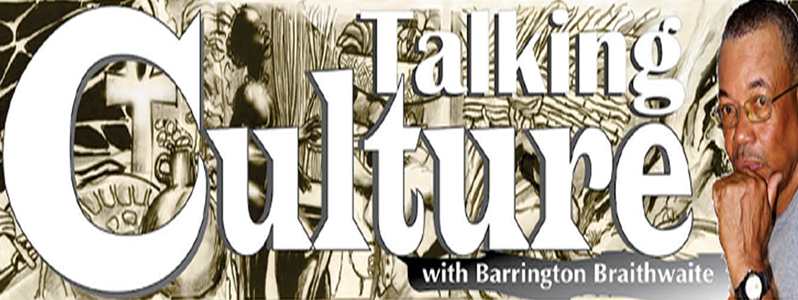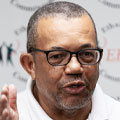MOST of our tribal and old-world hymns and cultural songs have become disconnected between who were brought here and who remained behind in the ‘Mother Lands’ through the sordid aims of colonisation. Still, familiar currents have remained in our rhythmic memory. One such is the melody that the captain of a slave ship retained and though he could not understand the language of the suffering Africans, he added words to it. Today we sing that hymn as ‘Amazing Grace’ and it bears its same mournful melody. The lyrics of the ship’s captain has done it justice.
The creation of the Americas we now know carries with it the spirit of past times that allow us to identify with each other beyond our ‘social ethnic borders.’ There is a narrative of significant importance that every cultural practitioner or activist should have in his/her library. It’s a small book titled ‘MUSIC IN THE CARIBBEAN’ by John Sealey and Krister Malm, with an introduction by Hollis Urban Liverpool BA, MA, DIP. ED, also known as ‘The Mighty Chalkdust’ Chapter 2. I will share ‘abridged’ with the reader. “Some 200 years ago, two slave ships sank in a hurricane off Saint Vincent, numbers of male Africans aboard, reached the shores of Saint Vincent. Upon arriving they were attacked by Carib warriors whom they defeated, as is the culture of the ancient world. They took over the remainder of the Carib tribe, women, children and elders, and a new people were born. Musically, the women kept their Amerindian tunes. The Africans introduced their West African music. A remarkable musical fusion occurred that was passed on to the children, that today is identified as a branch of Creole music, of African and Amerindian styles to the students of our culture.”
 The biographical records of this nation reflect on the Arts and the usage of local talents as far back as the 1790s. Bolingbroke was amazed how semi-literate and illiterate African talents were able to perform. In his words: “ In the French Islands, negro performers have been enlisted to take parts in the maritime companies; but there are few Moorish characters on our stage, except Otello, Juba, and Oroonoka, which they could personate with propriety. In an illiterate community, which could only learn from the ear, the drama is an important instruction.” That the latter was understood then, what we seem not to comprehend today in the same Guyana is not complimentary. Bolingbroke also stated that the travelling drama groups came twice to Stabroek during his stay here-1799-1806. He indicated that their stay would sometimes last three to four months at a time. The next report of local art was tarnished by the obvious, deep bigotry of the writer ‘James Rodway’ in his book ‘The story of Georgetown’ -1903. PANORAMA: is the title of the paragraph, as follows: “In 1811, a Panorama of Stabroek was opened on the site of the present Water Works. Mr. Bryant, portrait and scene painter, as the parent of the work, “Alone he did it,” the only instance of the kind ever known where an individual has undertaken a task of such a nature without any assistance, except the mere automation help of a slave. The same gentleman published a history of the East Coast Insurrection in 1824, illustrated by lithographs-the only illustrated book ever done entirely in the colony, the accompanying sketch plan of Geotgetown is taken from that work” thus concludes James Rodway. I have seen the 1823 work of Joshua Bryant. As an artist, nothing that this man did would have required mere automaton application. The helper Bryant had with him whether he was a slave, had to have been a talented artist. Bryant’s work left no room for automation, as would be executed in sign painting, where filling in block colours requires no management of perspectives and tones for light and shade effects. Thus we must explore the currents of the times and correct direct intentional inaccuracies, and please be aware that those times are not all gone. To the post-emancipation eras, Basil Hinds offers an incredible article that features the emergence of the ‘BG Arts and Craft Society’ in the 1930s, several groups emerged. “The ‘Ruskin Art Group’ and the ‘Working Peoples Art Class’ the first group formed in 1933 for youngsters still in primary school, and the latter operating in the field of workers of all categories. Denis and Aubrey Williams, Donald Locke, Stanley Greaves, Michael Leila, Claud Hoyte, Emerson Samuels, all at one time or another worked in association with Rupert Burrowes, founder-leader and prime mover of these art groups.” The recognition of what was accomplished reminds us that there were beginnings and hard work done to craft methods and purpose. This excerpt does not complete the contributions of this true scribe of the arts ‘Basil Hinds’; there is much more. The intention now is to create a mental timeline of the local aesthetics; and the enhancing awareness to our creative souls that we are still on the journey of that profound work of art, ‘building a nation’, and we do have big shoes to fill.
The biographical records of this nation reflect on the Arts and the usage of local talents as far back as the 1790s. Bolingbroke was amazed how semi-literate and illiterate African talents were able to perform. In his words: “ In the French Islands, negro performers have been enlisted to take parts in the maritime companies; but there are few Moorish characters on our stage, except Otello, Juba, and Oroonoka, which they could personate with propriety. In an illiterate community, which could only learn from the ear, the drama is an important instruction.” That the latter was understood then, what we seem not to comprehend today in the same Guyana is not complimentary. Bolingbroke also stated that the travelling drama groups came twice to Stabroek during his stay here-1799-1806. He indicated that their stay would sometimes last three to four months at a time. The next report of local art was tarnished by the obvious, deep bigotry of the writer ‘James Rodway’ in his book ‘The story of Georgetown’ -1903. PANORAMA: is the title of the paragraph, as follows: “In 1811, a Panorama of Stabroek was opened on the site of the present Water Works. Mr. Bryant, portrait and scene painter, as the parent of the work, “Alone he did it,” the only instance of the kind ever known where an individual has undertaken a task of such a nature without any assistance, except the mere automation help of a slave. The same gentleman published a history of the East Coast Insurrection in 1824, illustrated by lithographs-the only illustrated book ever done entirely in the colony, the accompanying sketch plan of Geotgetown is taken from that work” thus concludes James Rodway. I have seen the 1823 work of Joshua Bryant. As an artist, nothing that this man did would have required mere automaton application. The helper Bryant had with him whether he was a slave, had to have been a talented artist. Bryant’s work left no room for automation, as would be executed in sign painting, where filling in block colours requires no management of perspectives and tones for light and shade effects. Thus we must explore the currents of the times and correct direct intentional inaccuracies, and please be aware that those times are not all gone. To the post-emancipation eras, Basil Hinds offers an incredible article that features the emergence of the ‘BG Arts and Craft Society’ in the 1930s, several groups emerged. “The ‘Ruskin Art Group’ and the ‘Working Peoples Art Class’ the first group formed in 1933 for youngsters still in primary school, and the latter operating in the field of workers of all categories. Denis and Aubrey Williams, Donald Locke, Stanley Greaves, Michael Leila, Claud Hoyte, Emerson Samuels, all at one time or another worked in association with Rupert Burrowes, founder-leader and prime mover of these art groups.” The recognition of what was accomplished reminds us that there were beginnings and hard work done to craft methods and purpose. This excerpt does not complete the contributions of this true scribe of the arts ‘Basil Hinds’; there is much more. The intention now is to create a mental timeline of the local aesthetics; and the enhancing awareness to our creative souls that we are still on the journey of that profound work of art, ‘building a nation’, and we do have big shoes to fill.




.png)









